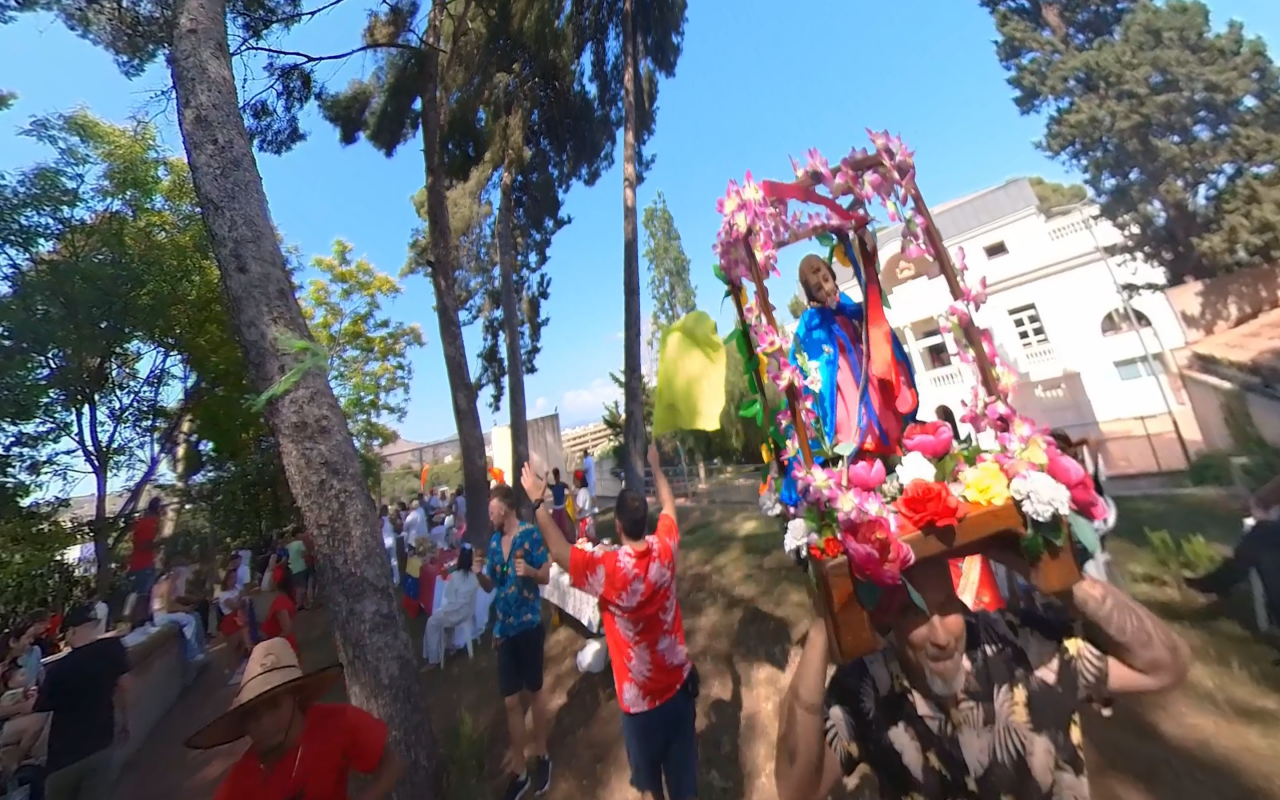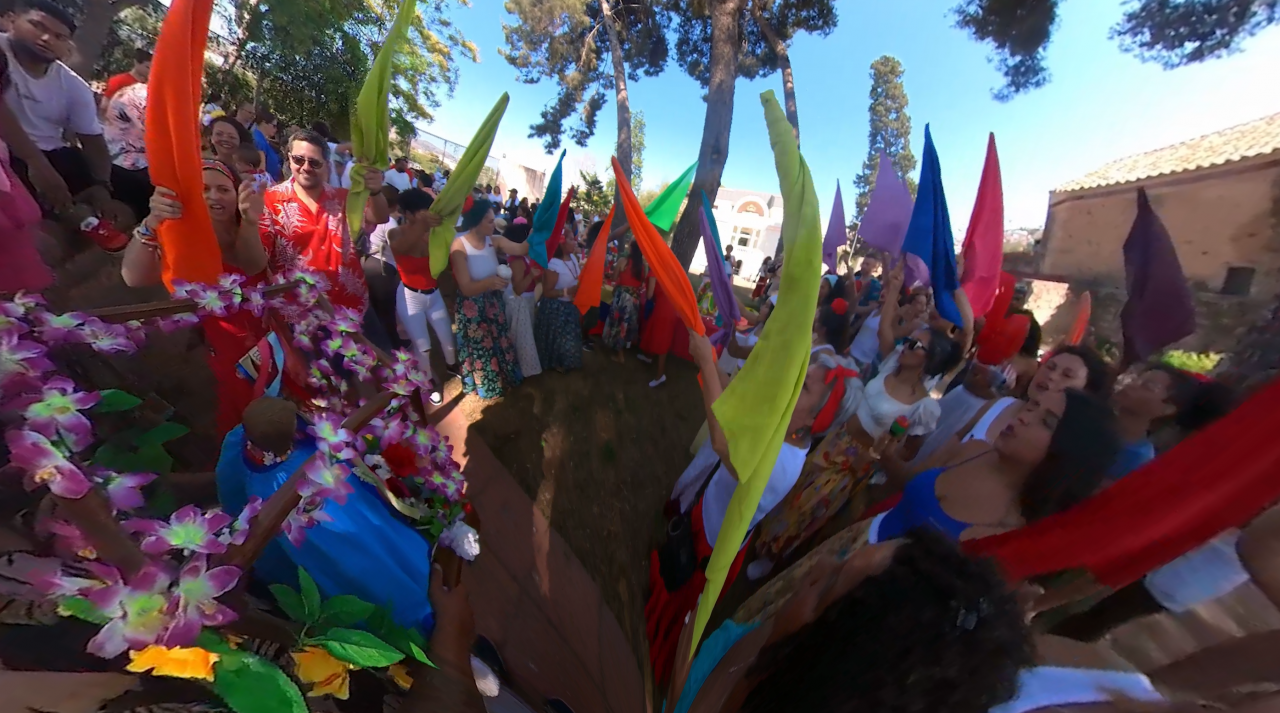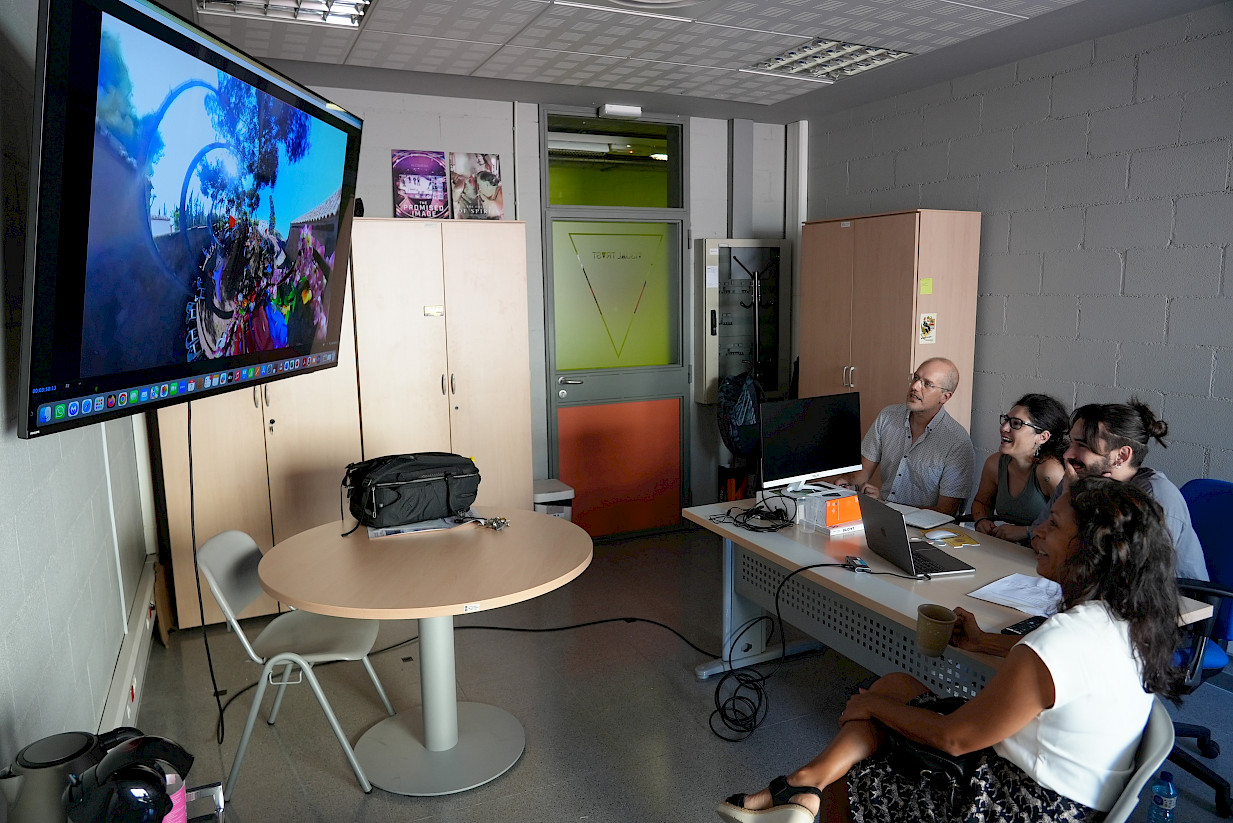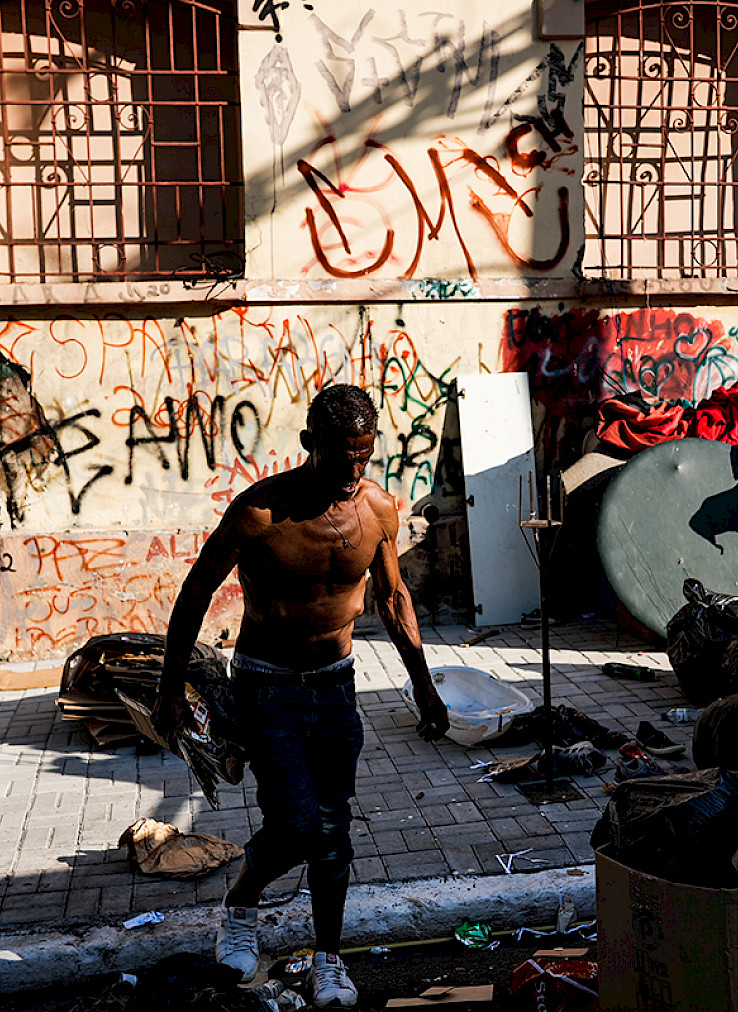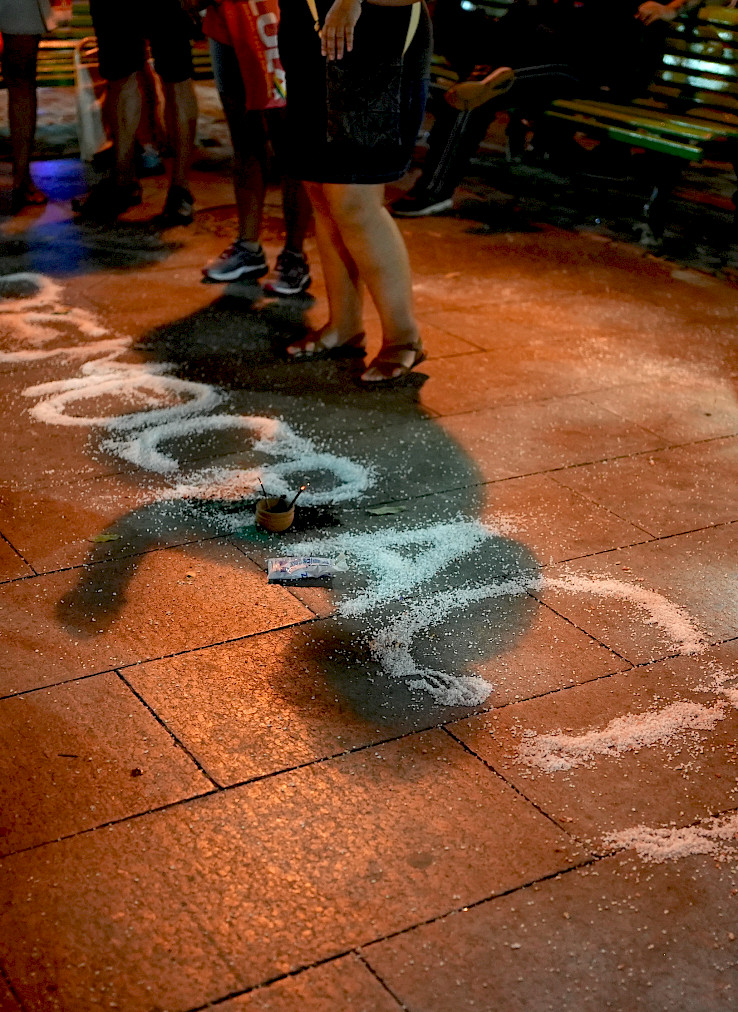This short film is a collaborative multimodal experiment about the ritual of San Juan among the Venezuelan community in Barcelona. It is important to consider that Sant Joan (in Catalan) is also an important festivity within Catalan tradition. Its celebration involves making fire in the streets, dancing, on eating together outside while eating coca (Catalan pastry). Yet the Venezuelan way of celebrating San Juan on the 23th of June involves two original elements absent in the Catalan tradition and that connect with the afro-descendant past of the country: the centrality of the image of the Saint, and the importance African-derived dances where drums (toque de tambor) play a crucial role.
The main idea that we had in mind for this visual piece was to film “from the Saint’s point of view”. The principle of “filming from other’s point of view” is classical in anthropology. What we decided was to take it seriously and to play with the idea of “experimental analogy”, that is, to invent a visual dispositive that allow us to image how it might be to see from the point of view of another being (in this case, of a spirit confused with its image). It is evident that we do not know (and cannot know) “how saints see”. Still, we can figure out strategies, based on our ethnography and on what people say about the saint existence, that “make us think” hoe they could see. Recursively, these strategies are good to make us reflect of our own ways of seeing and filming.
To express the idea of the non-human eye, we decided to use a 360 camera. The camera adopts two visual syandpoints: the one of the saint and the one of another abstract subject, which may be, for instance, of another entity taking part in the ritual. Indeed, believers say the, even though the festivity is focused on san Juan, it is likely that other “spirits” may take part on it. This third-person point of view can be equated, at some point, with a human gaze, giving a sense of "being there".
In terms of editing, we had to shorten the ritual a lot, and making some kind of “inner narration”. Although it is a very experimental piece, we had to build some characters and episodes. Of course, the main character of the film is the image itself. One of the main principles of anthropology of religion is that, within the ritual context, image act as persons. The image do not depict its referent, but rather becomes it. The ritual image has not to be understood in terms of representation but as a dispositive of presence. This singular autonomy and specificity of the image is exactly what we sook to convey visually with this film.
Once this multimodal experiment finished, we invited a member of the community of San Juan in our office to watch the first cut. It was an amazing experience which had both and ethical and an epistemological goal. . She gave us her permission to show the film and said is was “respectful” with the saint. She insisted on the importance of feminity in the ritual and also said that this film was something new that she had never seen before. According to her, it expressed well the idea that, during the ritual, time and space are altered into a kind of ontological upside-down. For instance, the film conveyed very aptly the idea of circularity. The ritual is made in circles, as the ritual time which comes back again and again. The camera of 360 also produces circular images that have a strong power of analogy.
The film is available in two formats: in 2D and for glasses of 3D. When seen in 2D, the viewer has the capacity to “move” within the image. In 3D, we may have an impression of being within the ritual.
It is also important to mention that filming and editing in a 360 camera requires different skills compared to a traditional camera. For example, one needs to make long shots, and the filmmaker has to locate herself right in the middle of the action (there is no zoom) and being aware that she will probably appear on it.
The operator of this film was Alkim Erol, one of the postdoctoral researchers of the Visual Trust project. She explains how she felt, in a kind of new version of Jean Rouch’s “ciné-transe” where mental images played a crucial role:
“I was trying to follow with the camera in my hand to get the real perspective of the saint, I synchronized with the music, I would feel integrated. Because mentally, sounds funny, I got into the saint's perspective. I kind of made a narrative in my mind that "I am one of the saints". It’s never gonna be in the footage but it is the way I saw it though my eyes. I literally liberated from my physical perspective and tried to see through the mental image.” (Alkim Erol, June 2023).
Of course, while doing this film we had a lot of obstacles. Our initial idea was to put the camera on top of the image but we were not allowed to do so. The camera was too big and heavy. We had to hold it ourselves with a long stick. Ironically, this obstacle made us think further on the figure of the filmmaker during rituals and on the very idea of becoming another through film.
Mistakes in ethnographic cinema are always a potential source of theoretical and practical imagination.
We would like to thank all the participants in the San Juan Venezolano en Barcelona to gave us the permission to make this film and to host us in a very warm and respectful way.
Click here to see the movie
Back to the list


